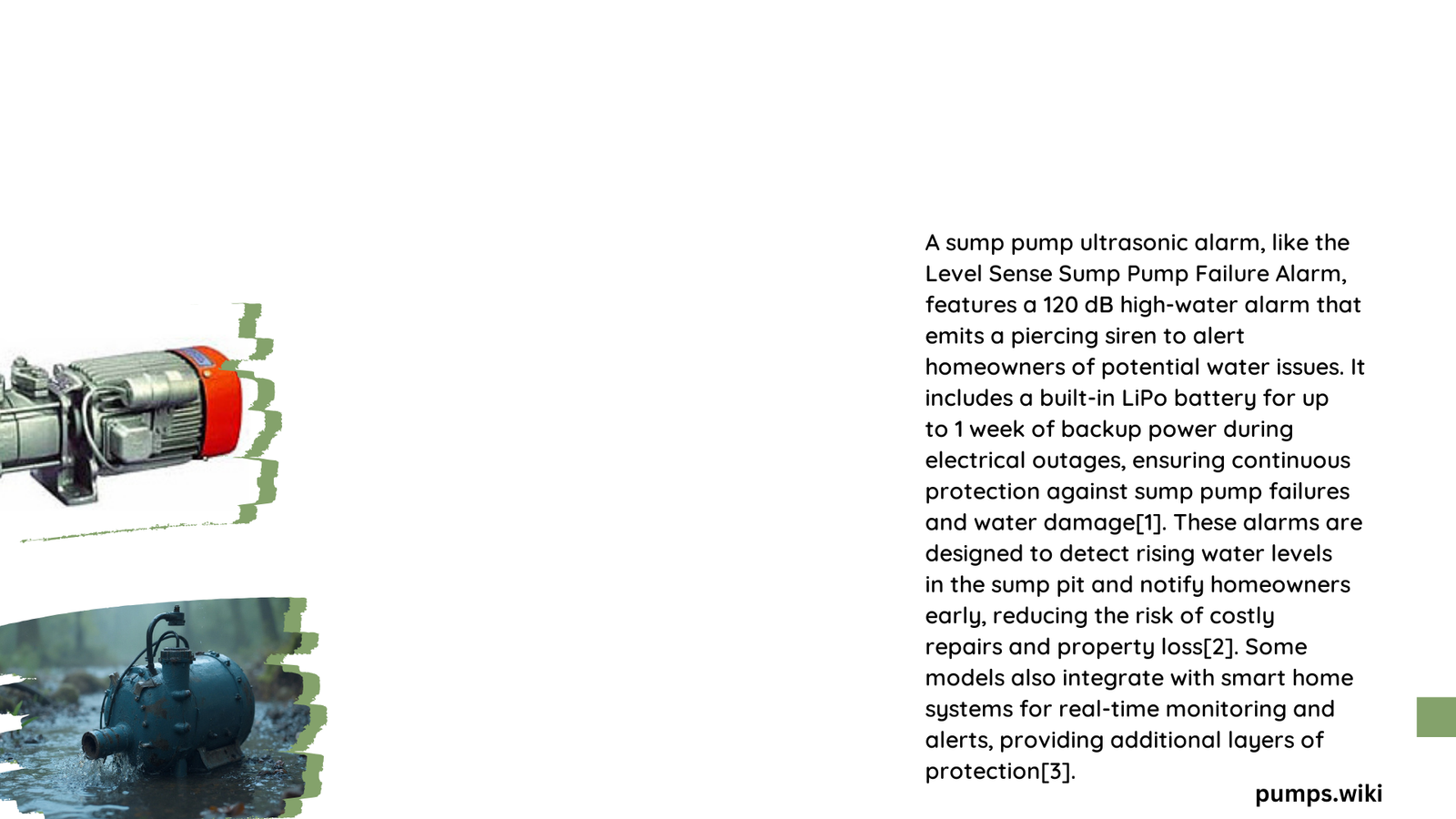Sump pump ultrasonic alarms represent cutting-edge technology designed to protect homes and businesses from potential water damage. These sophisticated devices utilize high-frequency sound waves to accurately detect water levels, providing real-time monitoring and instant alerts when liquid reaches critical thresholds. By combining advanced sensor technology with intelligent alarm systems, homeowners can proactively prevent basement flooding and minimize potential water-related property damage.
What Makes Sump Pump Ultrasonic Alarms Unique?
Ultrasonic alarm technology offers several distinctive advantages over traditional water detection methods:
Key Technical Characteristics
- Detection Range: 9.8 to 32 feet
- Frequency Spectrum: 20-200 kHz
- Power Requirements: 95-250 VAC
- Mounting Flexibility: Multiple installation options
How Do Ultrasonic Sensors Work?
Ultrasonic sensors emit high-frequency sound waves that bounce off liquid surfaces, measuring precise water levels through:
- Wave Transmission: Sensor generates sound waves
- Wave Reflection: Waves reflect from liquid surface
- Time Calculation: Measures time between transmission and reception
- Distance Determination: Calculates exact water level
What Are the Primary Benefits?

| Benefit | Description | Impact |
|---|---|---|
| Precision | ±0.25% accuracy | Minimizes false alarms |
| Durability | No moving parts | Reduces maintenance |
| Versatility | Works in various environments | Broad application range |
What Installation Considerations Exist?
Sensor Placement Strategies
- Mount above potential water surface
- Ensure clear path for sound waves
- Avoid physical obstructions
- Position at recommended height
Wiring Requirements
- Use appropriate gauge wire
- Follow manufacturer specifications
- Implement proper grounding techniques
- Consider professional installation for complex setups
What Maintenance Practices Enhance Performance?
Recommended Maintenance Checklist
- Clean sensor surface quarterly
- Verify electrical connections
- Test alarm functionality
- Update firmware when available
- Inspect mounting hardware annually
How to Choose the Right Ultrasonic Alarm?
Selection Criteria
- Detection range requirements
- Power supply compatibility
- Environmental conditions
- Budget constraints
- Integration capabilities
What Troubleshooting Techniques Resolve Common Issues?
Potential Problem Areas
- False Alarms: Check sensor alignment
- Signal Interference: Eliminate nearby obstructions
- Power Fluctuations: Use surge protectors
- Calibration Errors: Recalibrate periodically
What Future Innovations Are Emerging?
Technology Trends
- Smart home integration
- Wireless connectivity
- Machine learning algorithms
- Cloud-based monitoring systems
Conclusion
Sump pump ultrasonic alarms represent a sophisticated solution for water level monitoring, offering unprecedented precision and reliability. By understanding their technical capabilities and implementing best practices, homeowners can significantly reduce flood-related risks.
